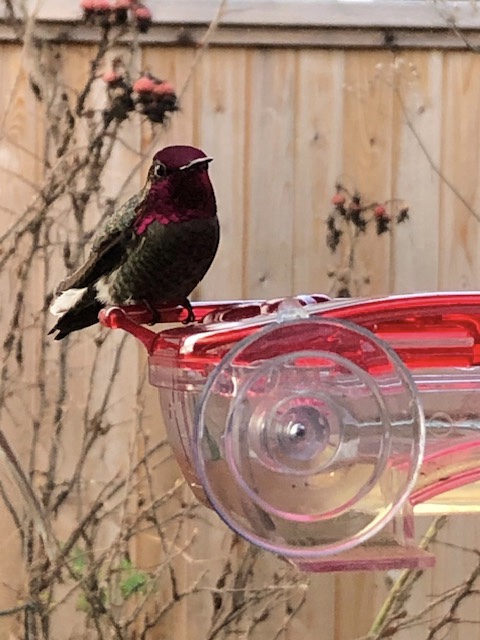Feeding Hummingbirds in Fall & Winter
Did you know:
Only feed with regular white table sugar, not brown or organic sugar. The molasses, and the iron it contains, may be toxic to hummingbirds.
✋Do not add food colouring to the water, they are attracted to the red feeders, not the red syrup.
✅The usual mix for hummingbird food is 1/4 cup sugar to 1 cup water, but in fall and winter, when they need more energy, you can make it up to 1/3 cup sugar per cup (it has the added bonus of not freezing as quickly too!
✅Best practice is to have more than one feeder to alternate them when it is freezing.
✅If possible, have 2 feeders which can not “see” each other. Hummingbirds are very territorial! This way the younger males can scoot in and get a drink while “big daddy” is at the other feeder.
✅Bacteria and mold grow in sugar water, so It is recommended to clean the feeder daily during hot weather but that can be extended to every couple days in fall and winter.
❗️You don’t need to boil the water if you are making small quantities every day or two, only boil it if you will be storing it in the fridge for up to a week.
During the winter, start planning for your native wildflower garden or container garden to continue to feed them in the spring and summer! Look for native red and orange tubular flowers and plants rich in nectar such as trumpet honeysuckle, bee balm and hummingbird sage. Check out Vancouver Avian Research Centre for recommended plants for attracting and feeding our feathered friends!
Sources:
✍️& by VMG Michelle L. & Ingrid G.
